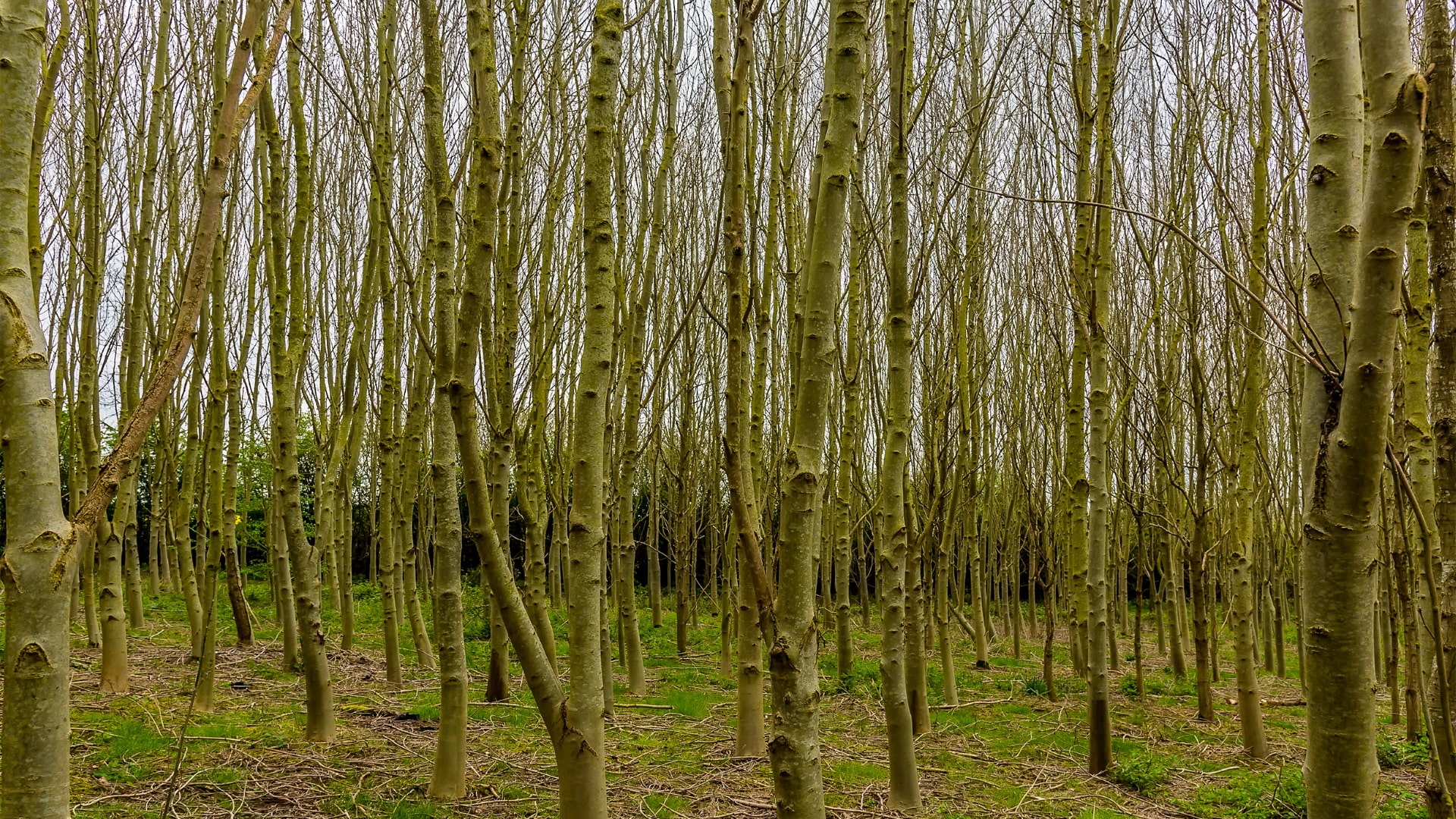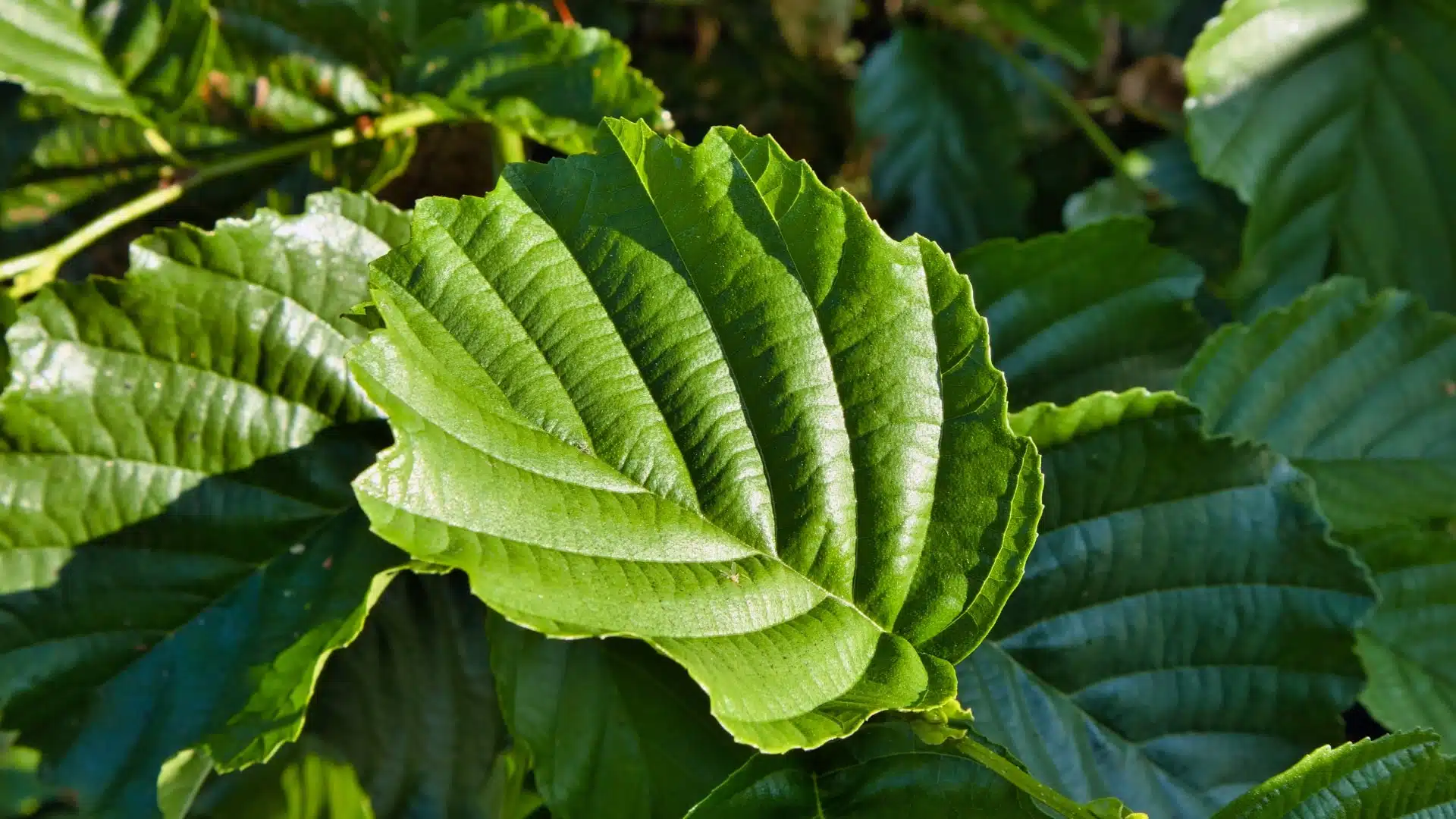Common Alder
Alnus glutinosa
Other short rotation forestry species include ‘Italian’, ‘Green’ & ‘Red’ alders
General info
Native to the UK, common alder is a water loving tree that grows well in swampy areas or close to rivers, lakes and ponds, with root structures that provide support toward prevention of soil erosion in these areas. The wood produced from this species isn’t as susceptible to rotting when waterlogged and has historically played roles in underwater construction and boat building. Alder forms associations with bacterium Frankia alni, allowing it to thrive in lower nutrient soils, and within the genus Alnus there are 30 species. Common alder is a monoecious species with both male and female catkins found on the same tree. They undergo wind-pollination and seeds are distributed by wind and water on maturation.
A notable current risk for this species is the discovery of a hybrid strain of Phytophthora, which can cause alder dieback, when previously it was assumed that alder was not impacted by these fungi significantly. Alder is also suggested to have medicinal properties within the bark and seeds with possible interesting antioxidant and antimicrobial activities. It may be suitable for both short rotation forestry due to its relatively significant growth levels in the first 10-15 years and is amenable to coppicing regrowth with the coppice quality being most suitable for bioenergy biomass utilisation.
Cultivation and agronomy
Common alder grows well in all soil types but requires significant moisture levels and does not grow well at higher elevations. The leaves lack mechanisms for controlling transpiration and this in part is a large factor relating to their water-demanding nature. They are tolerant of a range of temperatures, growing well across both northern and southern Europe.
They can reproduce via seed which following maturation (age 3–30 depending on ecotype) they produce every 3–4 years but new seed germination requires light levels that are generally unachievable under a mature stands canopy. The seeds of the alder species can float on water and remain viable in this situation for around a year. Successful germination is reliant on higher humidities.
Other alder species have different tolerances with ‘Italian’ and ‘Green’ alders needing less water whilst ‘Red’ alder does not do well on dry or sandy sites. They have yields averaging 4–14 m3 ha-1 y-1 with a normal rotation length of 35-50 years across species when not harvested on a SRF system. They grow at a rate of up to 1.5 m a year between peak ages of 4 to 10 years old before slowing and max heights fall around 28.5 m tall (between ages 50-80).
Where yield is concerned the annual volume increment reaches maximum around the 20-year age mark achieving 13–18 m3 ha-1 y-1. Alder is also noted as having potential as a coppicing species particularly in mixed systems where alder can offer the co-benefits associated with its nitrogen fixation abilities to boost co-localised species growth patterns.
Return to crops overview
Relevant research
Claessens, H., Oosterbaan, A., Savill, P., & RONDEux, J. (2010). A review of the characteristics of black alder (Alnus glutinosa (L.) Gaertn.) and their implications for silvicultural practices. Forestry, 83(2), 163-175.
Dahija, S., Čakar, J., Vidic, D., Maksimović, M., & Parić, A. (2014). Total phenolic and flavonoid contents, antioxidant and antimicrobial activities of Alnus glutinosa (L.) Gaertn., Alnus incana (L.) Moench and Alnus viridis (Chaix) DC. extracts. Natural product research, 28(24), 2317-2320.
Biomass Connect Trials
SRF Alder is currently being grown as part of the Biomass Connect trials at the following hub sites:
- AFBI Hillsborough
- BGI Chesham
- IBERS Aberystwyth
- NIAB Headley Hall
- Newcastle University Cockle Park Farm
- Rothamsted Research North Wyke
- SRUC Ayrshire
- SRUC Edinburgh

